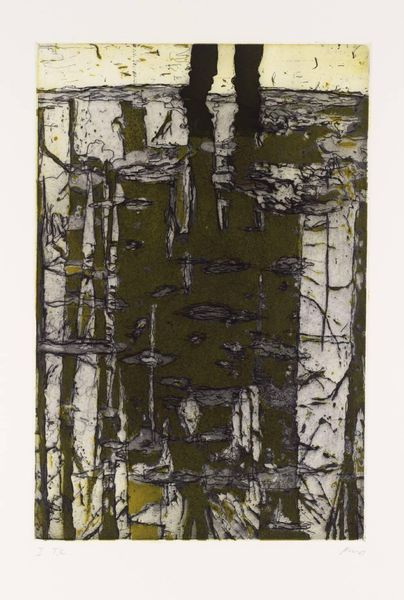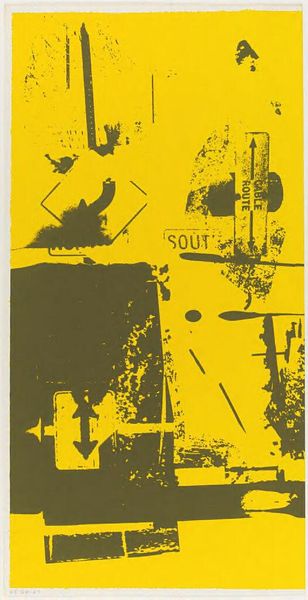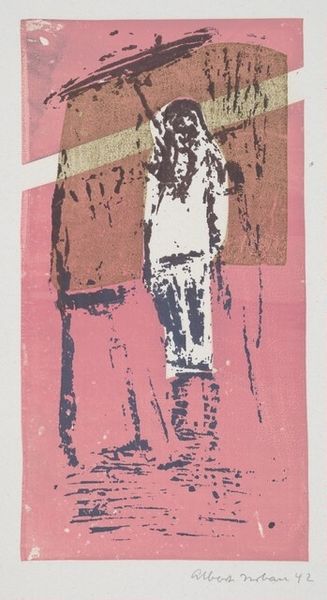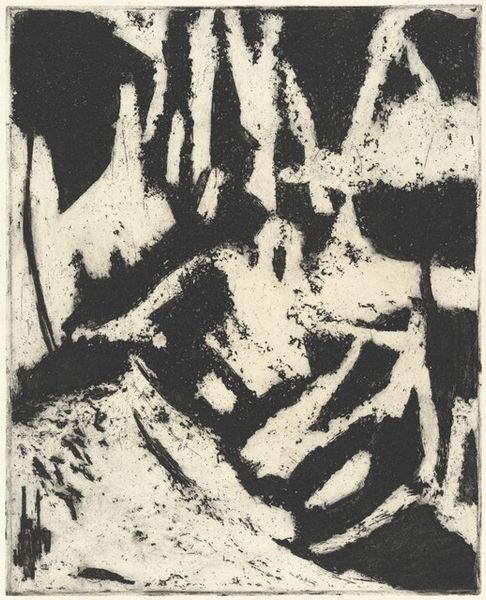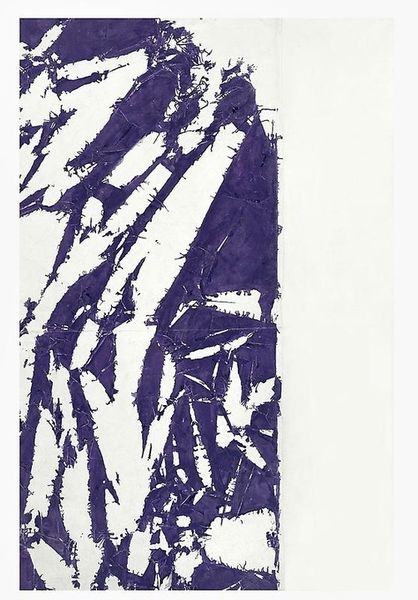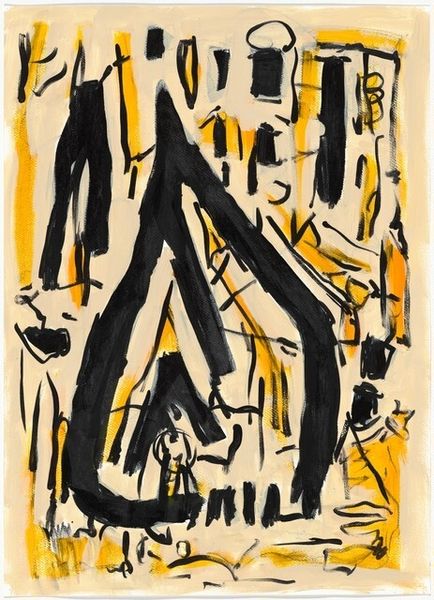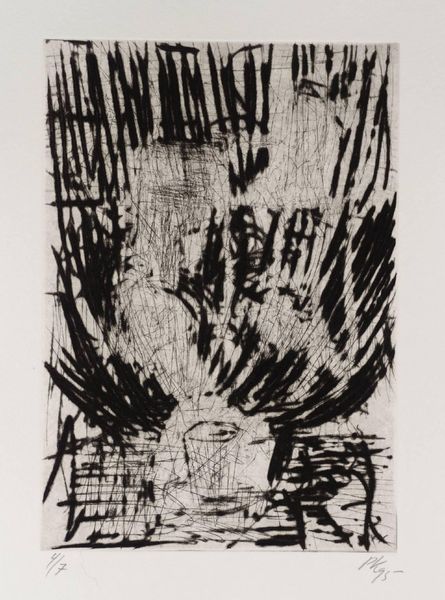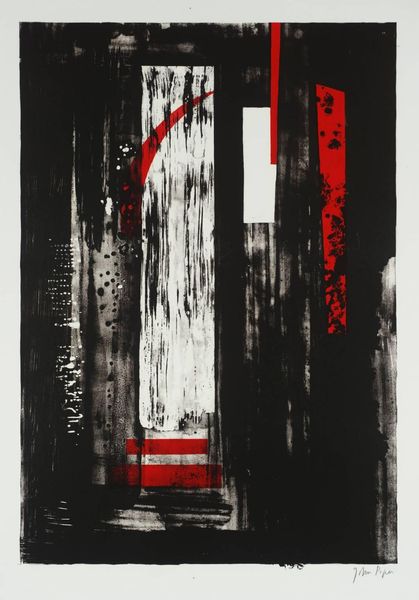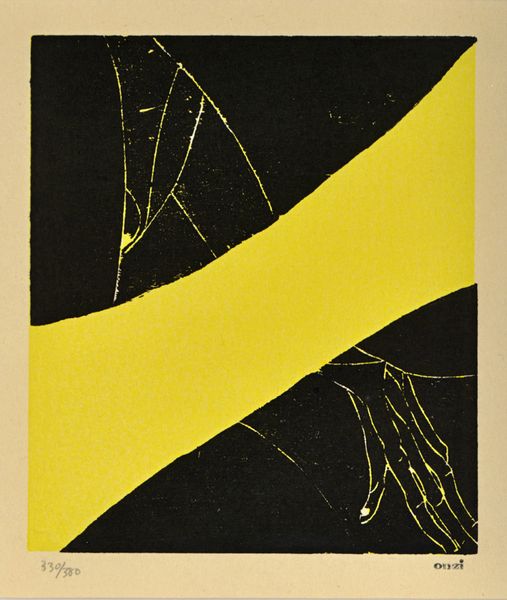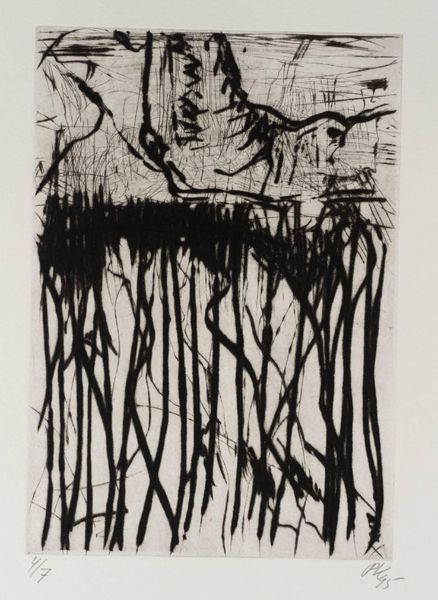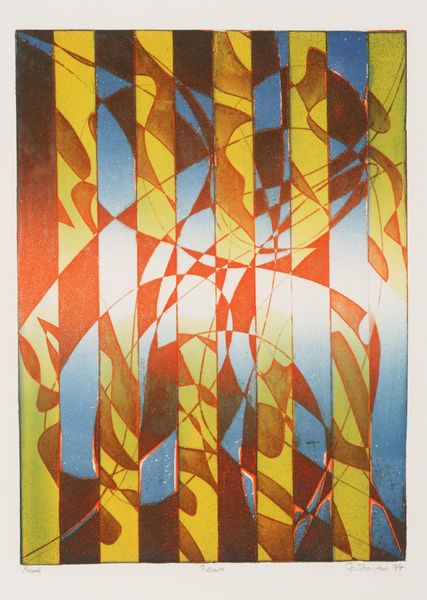
graphic-art, print, monoprint, graphite
#
abstract-expressionism
#
graphic-art
#
abstract expressionism
# print
#
monoprint
#
geometric
#
matter-painting
#
line
#
graphite
#
abstract art
Copyright: National Gallery of Art: CC0 1.0
Editor: Standing here, I'm drawn to Robert Mallary’s “Wall,” created in 1962. It's a striking monoprint, featuring strong black and ochre vertical lines that really give a sense of enclosure, or maybe even defiance. What sort of historical context should inform our appreciation of it? Curator: Well, this piece, arriving in the early 60s, situates itself within a fascinating intersection of art history and social tension. Abstract Expressionism had paved the way for artists to explore non-representational forms, emphasizing process and material. Given the prevailing concerns with socio-political themes, how does Mallary’s seemingly simple 'Wall' participate in or react to such concerns? Editor: Hmm, that's interesting, especially thinking about its title "Wall". It does give the impression of something meant to block or protect. Curator: Exactly! Consider the sociopolitical climate: The Berlin Wall was erected in 1961, heightening Cold War anxieties. In this context, the "wall" becomes a powerful metaphor. We need to think about the symbolic nature of walls, right? Is it just a physical barrier, or something else? Editor: I hadn’t thought about it in those terms! Looking at it now, I see less of a simple design and more of a…statement. Those uneven lines, almost aggressively vertical, they seem almost tormented. The layering adds a certain weight, and the color combination also does not make it inviting. Curator: That's an astute observation! Think of matter-painting; Mallary built up the surface to suggest both construction and potential destruction. So, instead of just a simple barrier, what feelings do you think the wall conveys at that moment? Editor: I see it as a commentary of power. Barriers aren't just structures; they dictate interactions and behaviors of groups of people. They can define, confine, separate... Curator: Precisely. By deconstructing the expected visual harmony, he's pushing the audience to critically consider our relationship with socio-political structures that defined the world. He is creating something new that contributes to our thinking around a global matter. Editor: I definitely will now! Seeing the work this way reveals a depth that I really missed. It goes beyond mere aesthetics. Thanks for pointing that out! Curator: My pleasure! Looking at it in relation to society emphasizes the power of visual culture and its reflection on reality. Art becomes a mirror of society's challenges, but also holds power to challenge conventions and social assumptions!
Comments
No comments
Be the first to comment and join the conversation on the ultimate creative platform.

